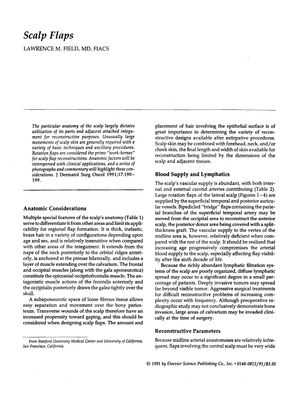Scalp Flaps
February 1991
in “
The Journal of Dermatologic Surgery and Oncology
”

TLDR Scalp flaps are used for reconstruction, considering factors like inelasticity, hair growth, and blood supply, with techniques adapting to age-related changes in vascularity.
In the 1991 paper by Dr. Lawrence M. Field, the use of scalp flaps for reconstructive purposes was discussed, focusing on the scalp's unique anatomical features that affect flap design and movement. The paper emphasized the scalp's thick, inelastic nature, hair-bearing capacity, and rich blood supply as critical factors in flap construction. Rotation flaps were the primary method for scalp reconstruction, with the need for larger flaps due to limited elasticity. The author noted that vascularity of the scalp decreases with age, impacting flap viability, especially after the age of 60. Various techniques such as rotation, bipedicled "bridge" flaps, and transposition flaps were described, along with ancillary techniques for scalp closure. The paper stressed the importance of preserving the pericranium during surgery and recommended galeal closure with deep sutures and surface staples for wound closure. Photographic examples of the techniques and outcomes were included in the paper.

